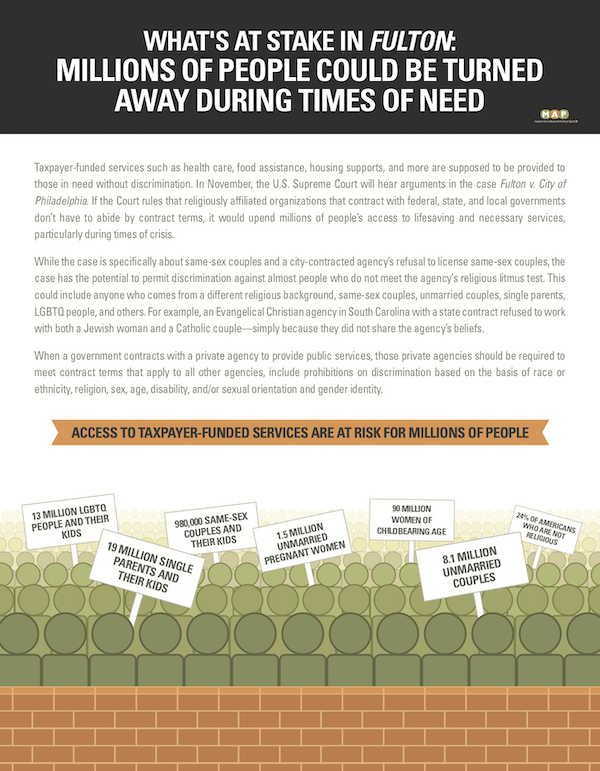Unintended Consequences: Five Ways Fulton Could Undermine Public Laws and Interests (PDF)Download What's at Stake in Fulton: Kids in the Foster Care System (PDF)Download What's at Stake in Fulton: Disaster Relief (PDF)Download What's at Stake in Fulton: Food Assistance (PDF)Download
What's at Stake in Fulton: LGBT Older People (PDF)Download What's at Stake in Fulton: Millions of People Could Be Turned Away During Times of Need (PDF)Download What's at Stake in Fulton: Public Services For Millions of People (PDF)Download Report — The High Stakes in the Fulton Case: Undermining the Vital Role of Child Welfare Laws & Regulations in Protecting America’s Children (PDF)Visit
The outcome of
Fulton vs. City of Philadelphia, heard by the Supreme Court on November 4, 2020, could dramatically reshape how LGBTQ people and same-sex couples, women, people of faith, unmarried couples, and others access taxpayer-funded supports such as job training programs, food assistance, emergency shelters, disaster relief agencies, and more. If the Court rules that religiously affiliated organizations that contract with federal, state, and local governments do not have to abide by contract terms, it would upend millions of people’s access to lifesaving and necessary services.
This series of issue briefs analyze what’s at stake in the
Fulton case. Ultimately, a broad ruling in favor of
Fulton could leave millions of people without access to needed publicly funded services – and discrimination could become a regular occurrence when seeking needed social services or assistance.
Recommended citation:Movement Advancement Project. October 2020. [Issue brief title].
www.lgbtmap.org/2020-fulton-issue-briefs. [Date of access].


